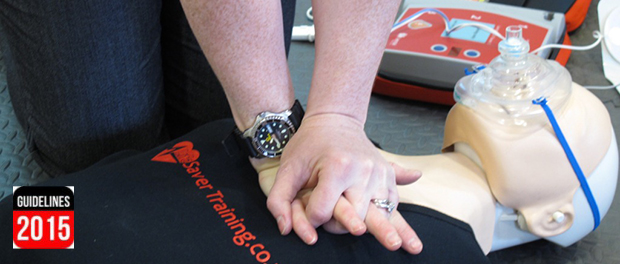Resuscitation Guidelines 2015

The Resuscitation 2015 guidelines contain detailed information about basic and advanced life support for adults, paediatrics and the newborn. Also included are guidelines for the use of Automated External Defibrillators and other related topics.
The Resuscitation Council (UK) guidelines have been adapted from the 2015 ERC Guidelines and are tailored specifically to clinical practice in the UK.
From UK Resuscitation Council Guidelines
There are three key changes:
1. ‘Shouting for help’ is no longer a step to be taught on it s own. The guidelines now state that the first aider should ‘ask someone to call 999/112’ after checking for normal breathing.
2. When calling 999/112, activate speaker function on phone to communicate with dispatcher.
3. Emphasis on seizure like episodes should not be confused with a sign of life. Seizure like episodes can occur following a cardiac arrest, due to reduced blood flow to the brain. If in doubt continue with CPR!
From European Resuscitation Council (ERC)
Key changes listed below:
. Control of Bleeding:
-
Elevation is no longer recommended for the treatment of bleeding.
-
Haemostatic dressings and tourniquets are to be used when direct pressure does not control severe bleeding.
-
Chest wounds should be left open to the environment without supplying a dressing – Three sided dressing is no longer recommended. Use direct pressure to control localised bleeding.
. First aider to be trained in the various methods of administering an Asthma inhaler e.g. spacer device.
. Hypoglycaemia – first aiders to give 15-20 g of glucose or tablets.
. Carbohydrate-electrolyte drinks (sports energy-rehydration) are recommended for exertion related dehydration.
. Burns should be cooled as soon as possible with water for a minimum of 10 minutes.
For further information please go to: https://www.resus.org.uk/resuscitation-guidelines/
